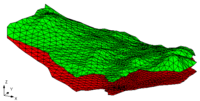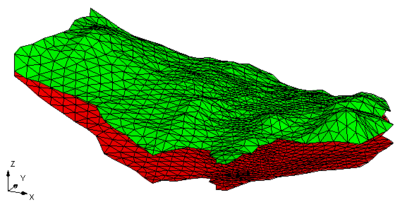GMS:TIN Module: Difference between revisions
From XMS Wiki
Jump to navigationJump to search
No edit summary |
No edit summary |
||
| Line 8: | Line 8: | ||
Several TINs can be modeled at once in GMS. One of the TINs is designated as the "active" TIN. The selection and [[GMS:Editing a TIN|editing tools]] apply to the active TIN only. | Several TINs can be modeled at once in GMS. One of the TINs is designated as the "active" TIN. The selection and [[GMS:Editing a TIN|editing tools]] apply to the active TIN only. | ||
[[Image:tins.png|thumb|center|400px]] | [[Image:tins.png|thumb|center|400px|Example of a TIN in GMS]] | ||

